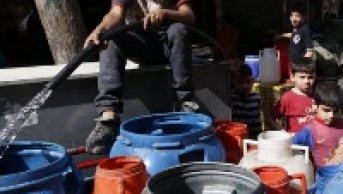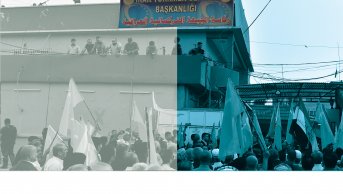Iran - The Hidden Riparian of the Euphrates and Tigris Basin
Turkey, Syria and Iraq appear as major actors considering the last fifty years of the utilization of the Euphrates-Tigris basin waters, one of the most important basins of the Middle East. When contributions from the riparian borders to the Euphrates River are taken into consideration in technical terms, mean values are listed as follows: the contribution rate of Turkey is 90 per cent, while the contribution rate of Syria is 10 per cent. As for the Tigris River; Turkey contributes 40 per cent, Iraq contributes 50 per cent, and Iran contributes 10 per cent of the annual flow. Also, Iran contributes a great amount of water especially to Shatt al-Arab with Karun River and Diyala River, which is the major tributary of the Tigris River, The water transfer projects that Iran has been carrying out over the aforesaid tributaries negatively affect the water resources used for irrigation especially in Iraq.
The Euphrates and Tigris Rivers have been important determinants for the relations between Iraq, Syria and Turkey since 1960s, when Turkey and Syria started to build Keban and Tabqa dams. Iran has not taken part in the negotiations or technical meetings for the past fifty years of its transboundary waters history. Iran has participated in the scientific studies carried out in the recent period. However, Iran does not clearly put forward its riparian identity in the aforesaid studies.
Iran, which is the upper riparian in the basin, has been experiencing great troubles in terms of water resources for the past decade. Both climate change and also mismanagement of water resources have led Iran to this crisis. Carrying out projects of water transfer from other basins in order to solve the water problems of central provinces since 1970s, Iran has entered a vicious circle as it also faces a problem in the donor basins used as resources in the recent period. The water transfer projects realized especially over the Rivers flowing into Iraq cause worry both in the provinces located in the aforementioned basins and also in Iraq.
There are many Rivers and watercourses that intersect with one another throughout 1200-km-long border between Iran and Iraq. More than 42 watercourses situated all along the border cross the border between the two countries.
Diyala River, to which both Iraq and Iran are riparians, is one of the major tributaries of the Tigris River. The basin area of Diyala River is some 31.896 km2. 75 percent of the basin is located within the Iraqi borders. The water bodies which originate from Iran and join Diyala are listed as follows: Beara, Towels, Serwan (the major tributary of Diyala) and Zegmen. These waters are significant sources for the Darbandikhan dam with the capacity of 3000 million m3 constructed over the Diyala River within the Iraqi borders in 1962. Besides, Abassan (Hawassan), Karatu and Derendek are other major sources.
The most important tributary of the Diyala River is the Alwand River. Dara and Said Sadek are the two major tributaries of Alwand River in Iran. The Alwand River originates from Iran's Dolahu mountains and contributes 5,74 billion cubic metres of water to the Tigris River per year. While 89 kilometres of the 152-km-long River lie within the Iranian borders, 63 kilometres are located in Iraq. Alwand poses a problem for Iran and Iraq particulary during the dry spell. After the rise in tensions caused by the derivation of Iran's River water especially during summer was eliminated back then as a result of Iranian officials' promise that greater amount of water will be released from the Alwand River. This situation has been repeated from time to time.
The Little Zab River, one of the significant sources of the Tigris River, originates from Iran. 74 percent of the basin with the area of 21.475 km2 is located in Iraq. The tributaries of the Little Zab are listed repectively as follows: Banowsota, Zarawa, Bani, Fazlaje, Kokasor, Wazna, Khairy Nerzenk, Leo, Tshezan, Janbera, KhaleelAbad, and Kula. According to the Iraqi records, the total amount of annual flow of the Little Zab is 7,5 billion cubic metres, which equals to 2,85 billion cubic metres in Iraq.
As mentioned above, a considerable part of the tributaries feeding the Tigris River originate from Iran. Iran continues to build dams and carry out water transfer projects particularly over the Sirwan and Karun Rivers. There is no doubt that Iraq has been facing water problems due to the mismanagement of water resources and dry spells. In addition, the water projects Iran has been carrying out in springhead cause worries across the country. Water cuts and their negative impacts particularly during the summer season often come to the forefront. Also, Iraq has certain concerns about potential disruption in both water quality and quantity that might stem from the aforesaid projects.






